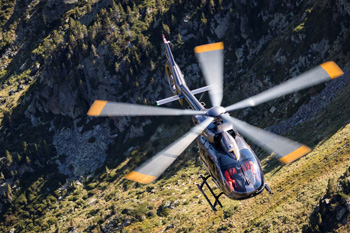
The Coulson Firefighting Blackhawk can use either S-70i or UH-60 airframes as the base platform. Photo: Coulson
Ahead of today’s opening of Aerial Fire Fighting North America in Sacramento, California, Coulson Aviation has announced that it has partnered with Kawak Aviation to launch a modern, upgraded, and more cost-effective Firefighting Blackhawk platform.
“The original firefighting Blackhawk was first brought to market more than 25 years ago, and there has been no innovation or significant improvement on the platform since,” explained Coulson Aviation President and COO Britton Coulson. “By leveraging our design, manufacturing, installation, and operating experience, we’ve made several significant improvements to not only boost the aircraft’s capabilities and safety but also provide access to the platform within various budgets. Partnering with Kawak is a big piece of that work.”
Coulson said its firefighting Blackhawk platform will include several innovations that will increase operational effectiveness and flight safety. Most notably, the inclusion of a redesigned retardant aerial delivery system, the RADS III belly tank, which, although carrying the same 1,000 US gallon (3,800 litres) load commonly found in UH-60 solutions, is lighter and has an updated release control system and faster, 40-second fill pump. This will also reduce vibrations found in older tank designs.
“Kawak’s culture is steeped in innovation, and when we brought the RADS-III into our portfolio in 2011, we knew we had an extraordinary opportunity to improve the dated system to make it more efficient and effective for operators,” added Andrew Mills, Kawak’s VP of Business Development. “As the IP owner of the RADS system, Coulson was the ideal partner to support designing an updated S70i- and UH-60-compatible system that increases efficiency and performance for operators.”
Besides the tank, externally, the Coulson Firefighting Blackhawk will feature the obvious extended landing gear but also, less obvious, Donaldson engine intake barrier filters. The internal upgrades add next-generation NVG technology, avionics, and onboard cameras aimed at reducing pilot workload while increasing situational awareness and overall mission effectiveness.








